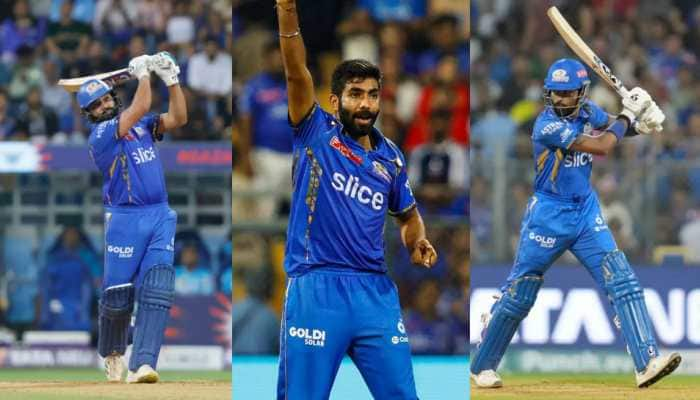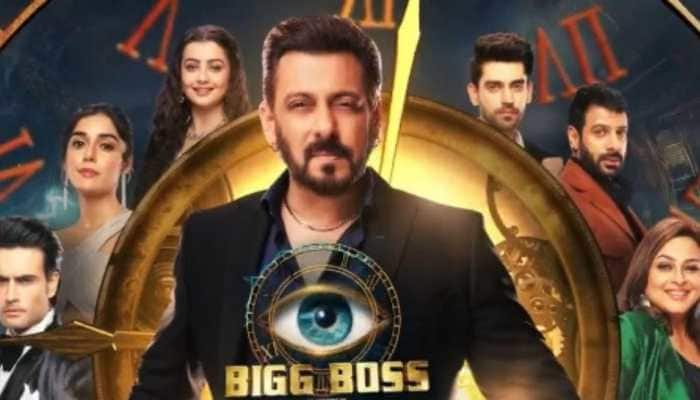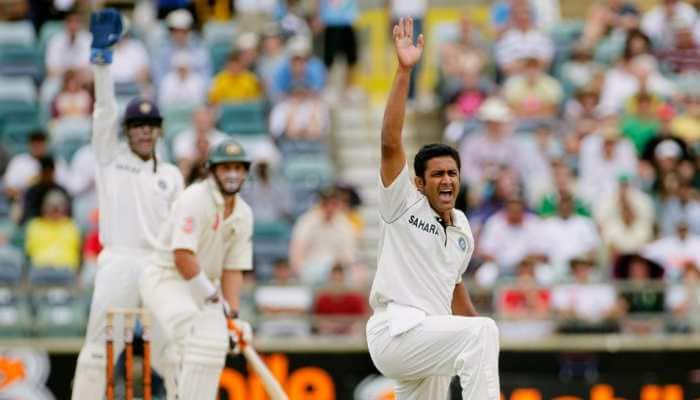Playing nationalism to public gallery
Rashtriya Ekta Yatra has brought the other side of the Kashmir story to the limelight.
Trending Photos
)
In a meek surrender to separatists, Omar Abdullah-led Jammu and Kashmir government succeeded in foiling BJP’s effort to hoist the Tricolour at Lal Chowk on Republic Day 2011.
<br><br>
It was for the second consecutive time in the last two decades, the Jammu and Kashmir government broke a convention trying to unfurl the national flag at Lal Chowk.
<br><br>
In 1991-92 then BJP president Murli Manohar Joshi took out the Rastriya Ekta Yatra from Kanyakumari to Srinagar. Breaking the separatist writ, he hoisted the Tricolour on January 26, 1992 for the first time ever at Lal Chowk amidst rocket attacks by militants. Remember, the flag hosting ceremony lasted precisely 13 minutes, surrounded by 80 <i>yatri </i>s and conducted under the chill gaze of an estimated 1000 security men. It was Narasimha Rao-led Congress government at the Centre that provided security for the historic flag hosting ceremony during the height of militancy in Jammu and Kashmir. Since then, the security forces had been hoisting the national flag on Republic Day and Independence Day at the clock tower till 2009.
<br><br>
Much has changed. Last year, the Congress-led UPA government at the Centre was a mute spectator to Jammu and Kashmir Chief Minister Omar Abdullah’s move to suspend the unfurling of Tricolour by security forces at Lal Chowk. This time the Congress-led Union government went a step ahead and threw its weight behind Omar Abdullah government in foiling BJP’s proposed program to hoist the Tricolour at Lal Chowk.
<br><br>
BJP’s march to unfurl the Tricolour at Lal Chowk was part of its Rashtriya Ekta Yatra launched by party’s youth wing Bharatiya Janata Yuva Morcha (BJYM). It was a sequel of the same <i>yatra </i> undertaken by Murli Manohar Joshi in 1991-92. This time Anurag Thakur, the president of BJYM, was spearheading the second edition of the Ekta Yatra.
<br><br>
“Kashmir belongs to India and the whole India belongs to Kashmiris. The pain of Kashmir is the pain of India. We need to feel it,” Anurag said in an exclusive chat with this writer in New Delhi before he left for Kolkata to kick start the Ekta Yatra.
<br><br>
But what prompted the saffron party to replay the Ekta Yatra amidst opposition demand for JPC on 2G scam. Perhaps the present row over Kashmir is the best answer for this. The <i>yatra</i> was launched at a time when anti-national forces are openly endorsing the idea of disintegrating Kashmir from the rest of India. The likes of Arundhati Roy and Syed Ali Geelani continue to make seditious speeches on Kashmir and thoroughly use the right to freedom of expression against the country. And when the secessionists make merry, the Congress-led UPA government is napping. At that point in time BJYM’s Rastriya Ekta Yatra and its proposed flag hoisting program at Lal Chowk was indeed a challenge to the separatist forces.
<br><br>
Rastriya Ekta Yatra-II was flagged off on National Youth Day in Kolkata, the birthplace of legendry Syama Prasad Mookerjee. The two-week long <i>yatra</i> covered 3037 kilometres and traversed through nine states. It was peaceful from the beginning to the end. The <i>yatra</i> was supposed to culminate at Mookherjee’s martyr place Srinagar where BJYM had plans to hoist Tricolour at Lal Chowk. But the <i>yatri</i>s were stopped on their way to Srinagar at Punjab-Jammu boarder of Lakhanpur and arrested under Section 144 of IPC by J&K Police for defying the “prohibitory orders” imposed by the state government. The result: Flag was not hoisted at Lal Chowk this year keeping with the writ of the separatists.
<br><br>
It would however be unfair not to see the context. J&K has been passing through a very tumultuous time recently. Looking at the present situation, the flip side of the argument is that would it be correct to rock the J&K boat? Those who believe in that line argue that BJP’s programme could have an adverse impact on the peace of the Valley which has seen an upsurge in violence recently.
<br><br>
Having stated that, we must also remember that last year separatists had flown the Pakistani flag atop Lal Chowk. The Omar Abdullah government was a silent observer to those anti-national crescendos. The state government also preferred to remain mum when Tricolour was burnt in full public display on a number of occasions.
<br><br>
Rashtriya Ekta Yatra has brought the other side of the Kashmir story to the limelight. There is no denial that Kashmir problem is the result of historic blunder committed during the early days of post independence era.
<br><br>
Those in know of political history of Kashmir must be aware of the fact that Kashmir was never under direct British rule. It was a princely state which acceded to India by virtue of a constitutional document called ‘Instrument of Accession’ under the Indian Independence Act, 1947.
<br><br>
Maharaja Hari Singh, then supreme ruler of Jammu and Kashmir signed the Instrument of Succession on October 26, 1947. Though the format of the Instrument of Accession applied to Jammu and Kashmir was the same as was executed for other princely states, then interim Indian government led by Jawaharlal Nehru agreed that ‘final decision’ with regard to the accession would be taken by the Constituent Assembly of Jammu and Kashmir and in the intervening period ‘a temporary provision’ was made in the Constitution of India.
<br><br>
BJP was possibly the first party to voice the national perspective on Kashmir. it. The party is a descendant of erstwhile Bharatiya Jana Sangh founded by Syama Prasad Mookerjee. It was Mookerjee who scripted an uprising with his famous slogan on Kashmir-- <i>Ek desh mein do Pradhan, do Vidhan, do Nishan nahi chalegi, nahi chalegi</i> (The country will never accept a system which allows two Prime Ministers, two Constitutions and two National flags). He went to Kashmir as an Indian citizen but was arrested and jailed in a dilapidated house. He died while in custody.
<br><br>
But when BJP was in power, did the party really remember the sacrifice of Mookerjee from whom it takes inspiration from? Do not forget, it was BJP which backtracked on its ‘commitment’ to abolish the Article 370 with an excuse of ‘compulsion of coalition politics’.
<br><br>
Now, out of power the saffron party sees the need to pick up the issue of abrogation of Article 370.Perhaps of late, the saffron party has realised its mistake of not going with the majority sentiments of Jammu and Kashmir after reeling under two successive Lok Sabha poll defeats. But is BJP really committed to its demand on Article 370?
<br><br>
BJYM’s Rashtriya Ekta Yatra has no doubt made it to the headlines. But will it be able to contribute in real terms to bringing peace, wiping out the tears of the hundreds of thousands voiceless of the Valley or promoting national integration?
Stay informed on all the latest news, real-time breaking news updates, and follow all the important headlines in india news and world News on Zee News.
Advertisement
Live Tv
Advertisement







)
)
)
)
)
)
)
)
)
)
